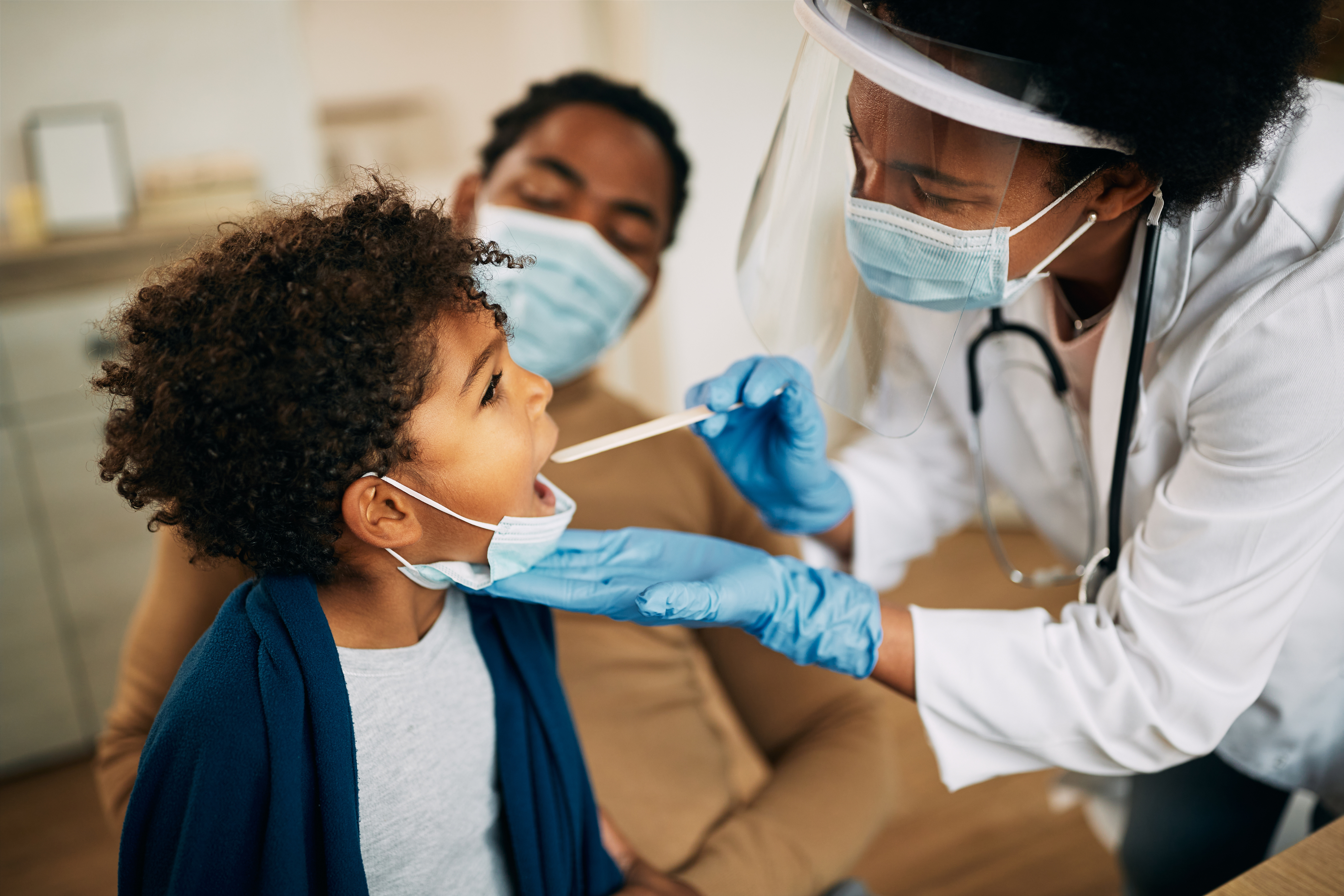Dental Visits Increase with Support from Pediatric Providers
Intervention by primary care clinicians may help more children access dental care and improve their oral health
In Brief:
- An NIDCR-funded research team used yearly wellness checkups as an opportunity to train primary care providers to address children’s oral health.
- Oral health interventions by pediatric clinicians increased the number of dental visits among children from medically underserved communities.
An NIDCR-funded clinical trial demonstrated that primary care pediatric clinicians could influence parents’ decisions to take their children to the dentist. Children’s dental visits increased when providers were trained to talk to parents about oral health, perform quick oral exams, and provide dental referrals during annual medical wellness checkups.
The researchers said that improving dental attendance by children receiving services through public health insurance provider Medicaid may ultimately help reduce untreated tooth decay and oral health disparities in communities experiencing disadvantage. The results of their findings were published on July 9 in JAMA Network Open.
Among preschool-aged children from lower income households, 17% have untreated cavities in their baby teeth — three times the rate of children from higher income families. Additionally, Hispanic and non-Hispanic Black children have even higher rates of untreated tooth decay compared to non-Hispanic White children.
“Since children from all backgrounds go to well-care visits, we thought we’d use these checkups as opportunities,” said lead researcher and epidemiologist Suchitra Nelson, Ph.D., of Case Western Reserve University. “By having primary care providers address dental and oral health care, it sends a powerful message to parents on the importance of following up with a dentist.”
For the study, Dr. Nelson and her team provided 63 pediatric clinicians with oral health-related education and skills training, including looking for white or brown spots on children’s teeth, noting findings in the electronic health record, providing a referral to a dentist, and talking to parents about oral health. The providers also received a list of local dentists who accepted Medicaid to whom they could refer families. The trial followed 1,023 children enrolled in Medicaid and their parents over three years. About half the children received a typical medical wellness visit and the other half received the oral health intervention during their annual wellness appointment.
By the third-year wellness visit, 52% of the children in the intervention group had visited a dentist, compared to 43% in the control group. This means that the children in the intervention group were 34% more likely to visit the dentist than children in the control group. By the end of the study, the intervention group trended toward having fewer untreated decayed teeth than the control group.
According to the researchers, one of the main goals of their study was to find a way to emphasize the importance of regular dental checkups for children as part of a holistic health approach. It’s commonly believed that because young children lose their baby teeth, they don’t need regular cleanings or cavity treatment. However, without regular dental care, the bacteria that cause tooth decay can remain in the mouth and attack newly emerging adult teeth.
Dr. Nelson said that her team plans to scale up their efforts to use this strategy and educational toolkit to reach health care providers nationwide.
The study’s findings follow on the heels of a 2023 U.S. Preventative Task Force (USPTF) statement pointing to a lack of sufficient evidence to determine whether the benefits outweighed any harms of providing oral health care during primary care visits for children older than 5. In 2021, the USPTF came to a similar conclusion for children younger than 5.
In response to the task force’s statements, NIDCR Director Rena D’Souza, D.D.S, Ph.D., M.S., and NIDCR Deputy Director Jennifer Webster-Cyriaque, D.D.S., Ph.D., authored an editorial in the Journal of the American Medical Association calling for more research to determine the public health impact of oral health screening in primary care settings.
“This latest study is an example of the research needed to demonstrate the value of integrating dental and medical care,” said Dr. Webster-Cyriaque. “By bridging these disciplines, dental and medical providers can work better together to reach all children to reduce oral health disparities and to improve children’s health.”
Related Links
- Big Hopes for Little Teeth
- Topical Solution Halts Tooth Decay in Children
- Report Reveals Striking Differences in Oral Health Care Across the U.S.
- Equalizing Access to Dental Care
References
- Nelson S, Albert JM, Selvaraj D, Curtan S, Momotaz H, et al. Multi-Level Interventions and Dental Attendance in Pediatric Primary Care: A Randomized Clinical Trial. JAMA Netw Open. 2024 Jul 1;7(7):e2418217. doi: 10.1001/jamanetworkopen.2024.18217.
- US Preventive Services Task Force; Davidson KW, Barry MJ, Mangione CM, Cabana M, Caughey AB, et al. Screening and Interventions to Prevent Dental Caries in Children Younger Than 5 Years: US Preventive Services Task Force Recommendation Statement. JAMA. 2021 Dec 7;326(21):2172-2178. doi: 10.1001/jama.2021.20007.
- US Preventive Services Task Force; Barry MJ, Nicholson WK, Silverstein M, Chelmow D, Coker TR, et al. Screening and Preventive Interventions for Oral Health in Children and Adolescents Aged 5 to 17 Years: US Preventive Services Task Force Recommendation Statement. JAMA. 2023 Nov 7;330(17):1666-1673. doi: 10.1001/jama.2023.21408.
- Reddy MS, D'Souza RN, Webster-Cyriaque J. A Call for More Oral Health Research in Primary Care. JAMA. 2023 Nov 7;330(17):1629-1630. doi: 10.1001/jama.2023.22005.
Attention Editors
Reprint this article in your own publication or post to your website. NIDCR News articles are not copyrighted. Please acknowledge NIH's National Institute of Dental and Craniofacial Research as the source.
Subscribe for NIDCR Updates
Receive email updates about the latest advances in dental, oral, and craniofacial research.
August 2024


